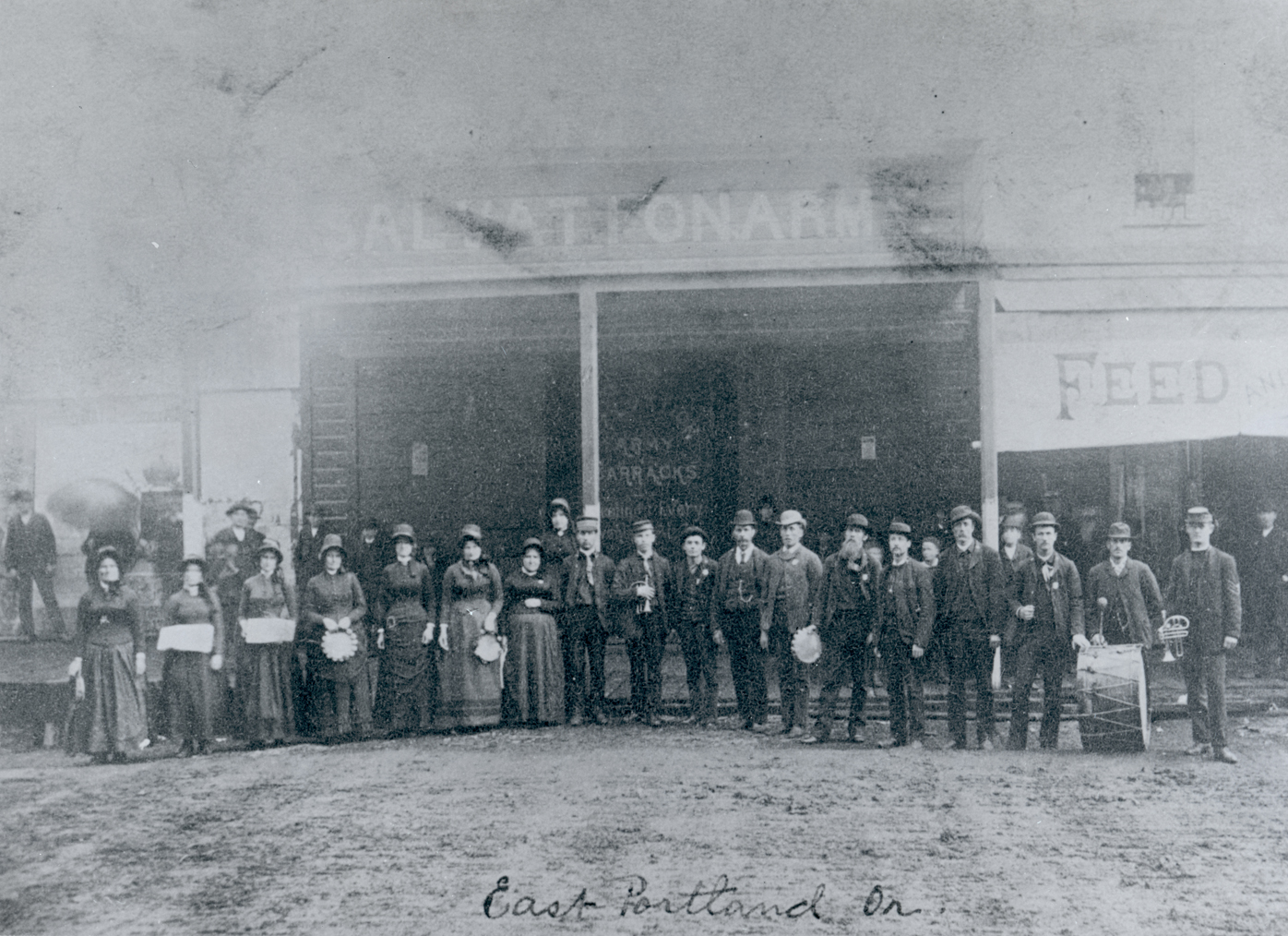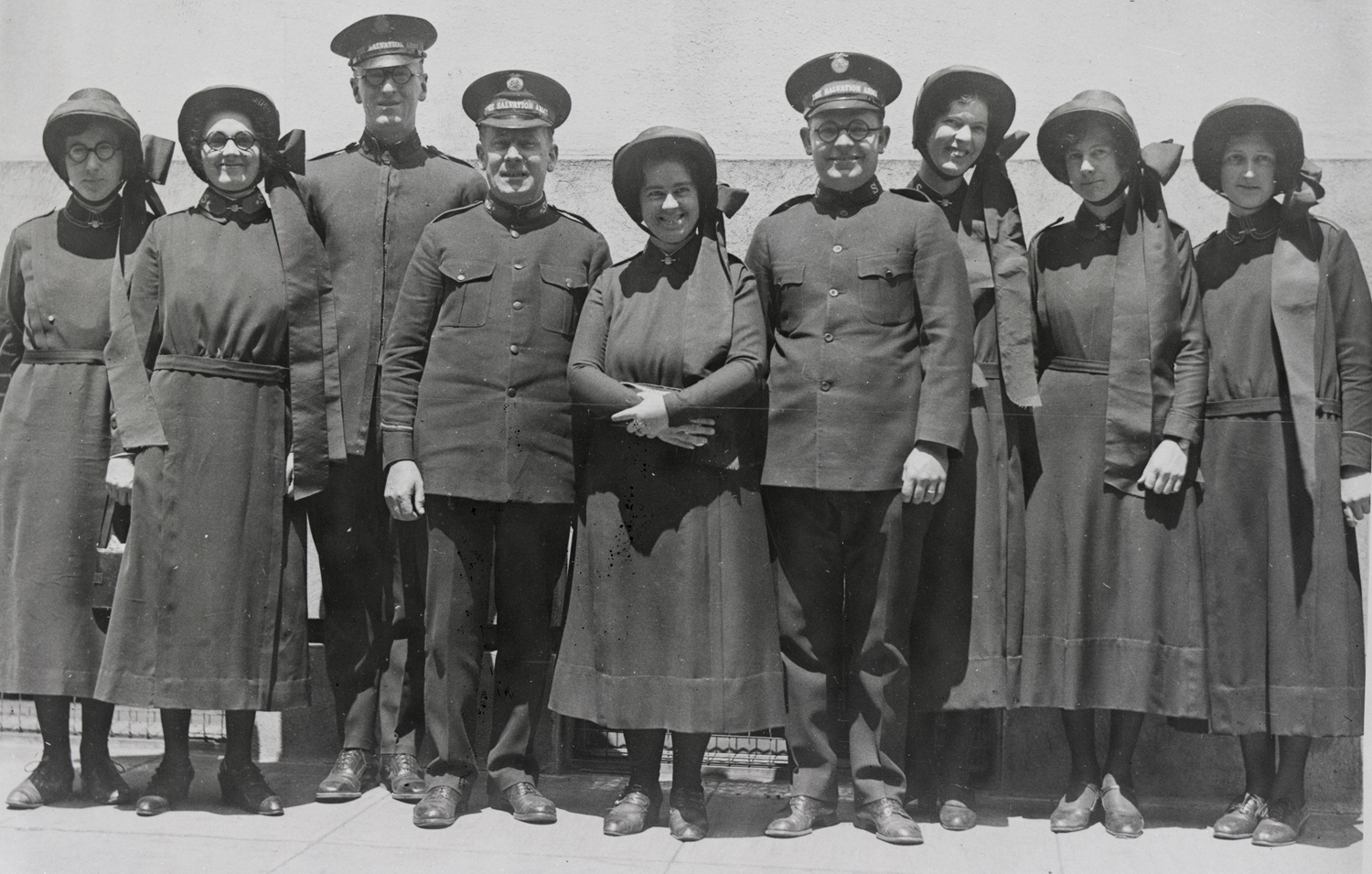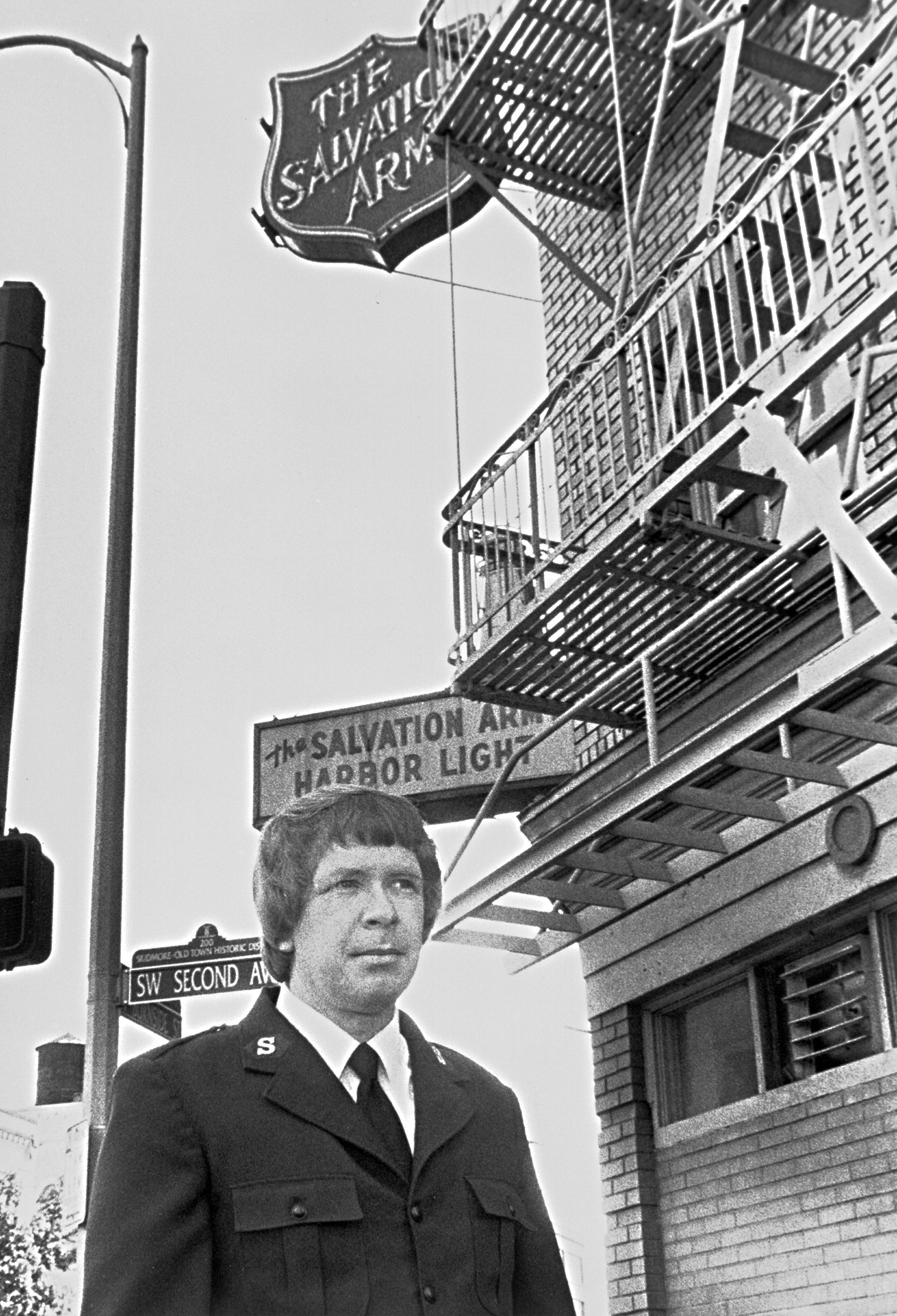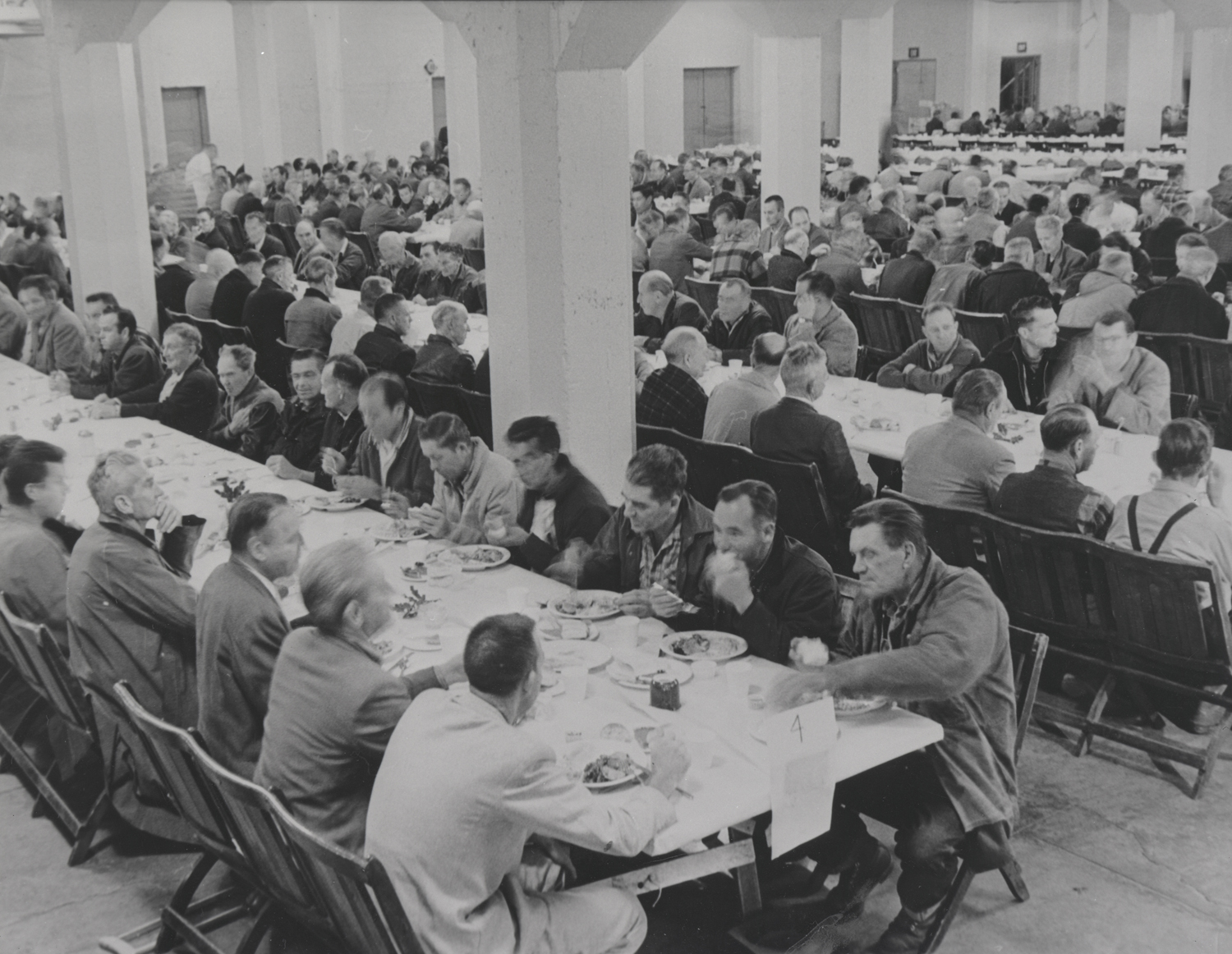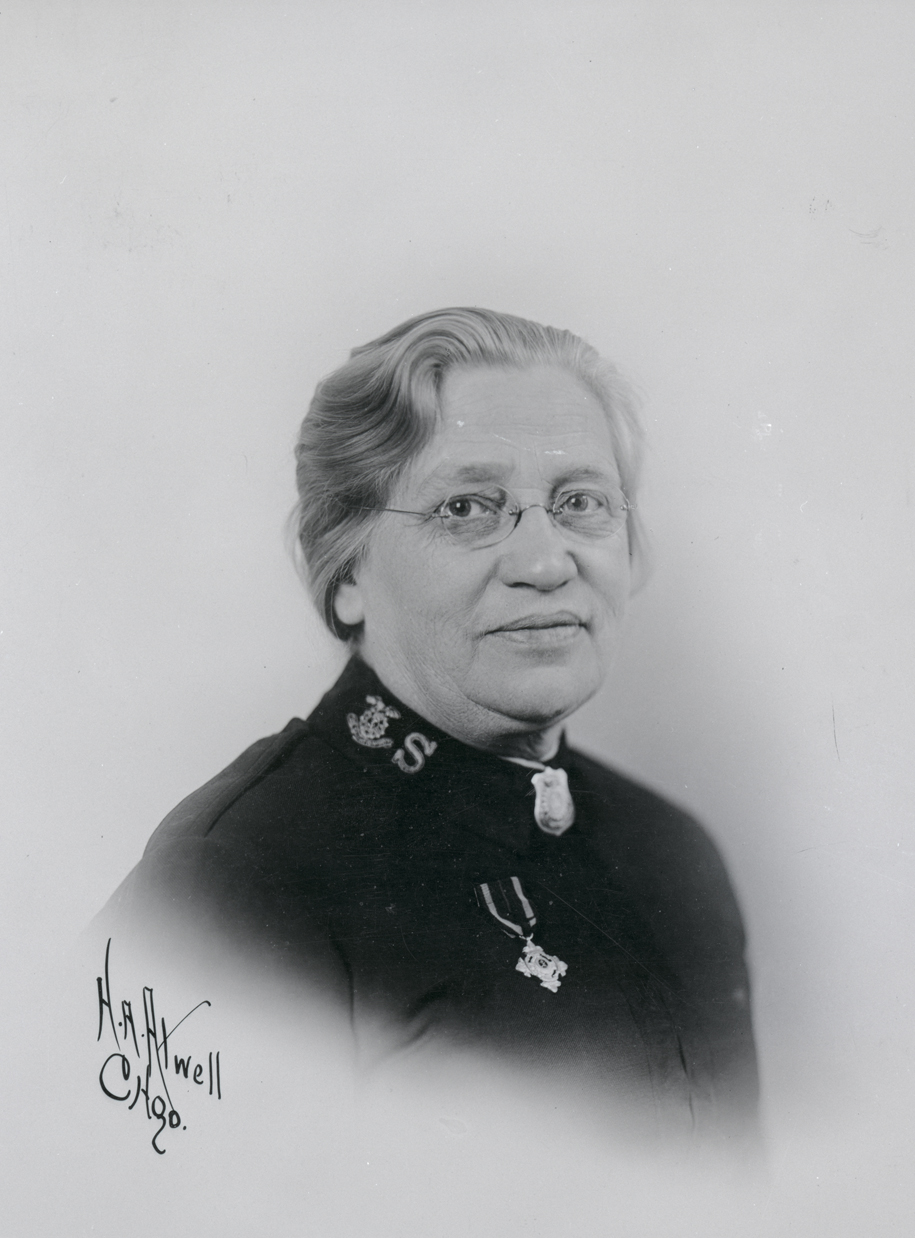The first Salvation Army meeting in Portland was held on October 3, 1886, at the corner of Southwest Fifth Avenue and Burnside Street. Captain Mary Stillwell led the open-air worship service and soon after established the first corps in the Pacific Northwest. The region is now comprised of the Salvation Army's Cascade and Northwest Divisions, which include Oregon, Washington, Idaho, and parts of Montana.
William and Catherine Booth first established the Salvation Army in 1865 as the Christian Mission in London’s East End. In the late 1870s, William Booth developed a new form of evangelism, using a military structure for his group of believers and adopting ranks, uniforms, and brass bands. He first used the Christian Mission’s new name, “a salvation army,” in 1878. By 1880, the Salvation Army had expanded to the United States. Booth toured North America on several occasions, visiting Portland in 1894.
The Salvation Army targeted the Pacific Northwest for its missionary work in the United States, regarding the region as one of “extreme godlessness,” with Portland especially having a reputation as a town full of vices. Captain Henry Stillwell, who led Salvation Army efforts in California, sent his wife Mary Stillwell and two female cadets to Portland in the summer of 1886. By mid October, Mary Stillwell had opened a Salvation Army barracks on Burnside, between Fourth and Fifth Avenues.
A corps opened in East Portland in 1887, where opposition to the Salvation Army was strong. The city had strict ordinances forbidding religious meetings in the street, the public playing of instruments, and parades without special permits. Salvationists often violated the ordinances, leading to heavy fines and arrests. They marched through the streets, played brass instruments, and prayed publicly while heckling crowds threw mud, stones, and rotten vegetables. When East Portland and Albina merged with Portland in 1891, the strict eastside ordinances were no longer in effect, and Salvationists were able to practice more freely.
During the 1890s, the Salvation Army expanded its services and corps throughout the city. It established a soup kitchen and shelter in 1894, and an industrial home for the rehabilitation of men opened the next year. A women’s rescue home opened in 1897.
By the early twentieth century, the iconic Salvation Army red kettle and accompanying bell ringers made their first appearances in Portland. The tradition started in 1891, when Salvationist Joseph McFee of San Francisco stationed a large pot near the riverfront and collected donations to provide free Christmastime meals to the city's poor. The kettle tradition spread to other corps across the country, including Portland, and has become a major symbol of the organization.
In 1905, a new Salvation Army province was created, with headquarters in Portland. The territory had previously been attached to the California province, but the new arrangement included Oregon, Washington, Idaho, and Montana. Provincial headquarters relocated to Seattle in 1906.
During World War I, the Salvation Army garnered international recognition for its relief efforts for American soldiers stationed in Europe. Portland resident Margaret Sheldon Stufflebeam was sent to France in 1917 as an ensign in the Salvation Army. The organization had set up canteens along the American front, but rations were limited, and Stufflebeam and Ensign Helen Purviance suggested they make doughnuts. The first batch was an immediate success, and soldiers began referring to the Salvationists as “doughnut girls.” Stufflebeam and other women officers continued to serve doughnuts to the men at the front until the end of the war in 1919.
The 1920s marked a significant decade for the organization, as the Salvation Army began extending its presence in Portland and Oregon. In 1917, it purchased the White Shield Home in Northwest Portland, a maternity home and hospital originally opened by the E. Henry Wemme endowment fund in 1917. The Salvation Army’s women’s rescue home relocated to the White Shield building in 1920.
The organization also purchased a lot at Southwest Sixth Avenue and Ankeny Street for the construction of a new building. The Citadel Building, which opened in 1922, served as the headquarters for the Salvation Army in Oregon until the 1960s, when the headquarters relocated to an existing building on Sandy Boulevard and Northeast 17th Street. Several programs were established during the 1920s, such as the Red Shield Boys Club and Camp Trestle Glen in Boring, the first Salvation Army summer camp west of the Mississippi River.
The Salvation Army worked in the Portland community throughout the twentieth century. During the Depression, a relief kitchen fed 800 homeless men a day. During World War II, Portland Salvationists participated in Salvation Army service units. When the city of Vanport flooded on May 30, 1948, the Salvation Army led disaster relief efforts, providing food, clothing, and shelter to thousands of victims.
The Salvation Army continued to open corps in the Portland metropolitan area. The newest, the Tualatin Valley Citadel, opened in 1991 to serve Washington County. Portland is the headquarters of the Cascade Division, which encompasses Oregon and southern Idaho. Twenty-two corps and ninety-four service centers provide aid and relief to areas throughout the division.
-
![Salvation Army, Portland, band, ca 1890]()
Salvation Army, Portland, band, ca 1890.
Salvation Army, Portland, band, ca 1890 Courtesy Oreg. Hist. Soc. Research Lib., OrHi 76646
-
![Salvation Army, Portland, Citadel]()
Salvation Army, Portland, Citadel.
Salvation Army, Portland, Citadel Courtesy Oreg. Hist. Soc. Research Lib., OrHi 76657
-
![Salvation Army, Portland]()
Salvation Army, Portland.
Salvation Army, Portland Courtesy Oreg. Hist. Soc. Research Lib., OrHi 009828.jpg
-
![Salvation Army, Portland, May 1982]()
Salvation Army, Portland, May 1982.
Salvation Army, Portland, May 1982 Courtesy Oreg. Hist. Soc. Research Lib., OrHi 98386
-
![Salvation Army, Portland, Thanksgiving 1962]()
Salvation Army, Portland, Thanksgiving 1962.
Salvation Army, Portland, Thanksgiving 1962 Courtesy Oreg Hist. Soc. Research Lib., OrHist 007670
-
![Salvation Army, Portland, musicians]()
Salvation Army, Portland, musicians.
Salvation Army, Portland, musicians Courtesy Oreg. Hist. Soc. Research Lib., OrHist 023187
Related Entries
Map This on the Oregon History WayFinder
The Oregon History Wayfinder is an interactive map that identifies significant places, people, and events in Oregon history.
Further Reading
“The Salvationists Again.” The Oregonian. November 9, 1889.
Murdoch, Norman H. Origins of the Salvation Army. Knoxville: University of Tennessee Press, 1994.
Taiz, Lillian. Hallelujah Lads & Lasses: Remaking The Salvation Army in America, 1880-1930. Chapel Hill: University of North Carolina Press, 2001.
Winston, Diane H. Red-Hot and Righteous: The Urban Religion of the Salvation Army. Cambridge: Harvard University Press, 1999.

